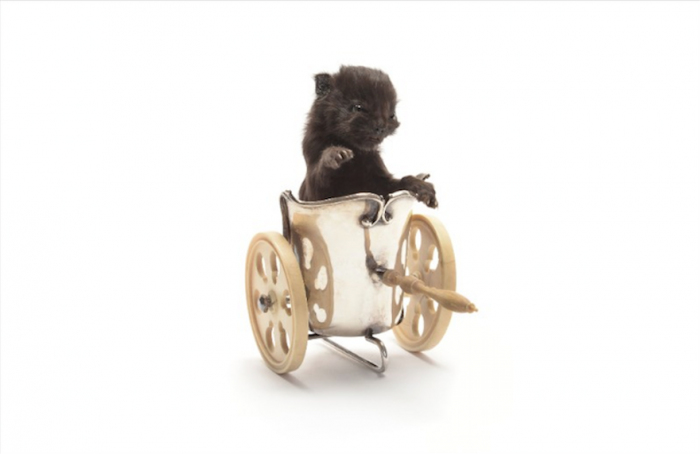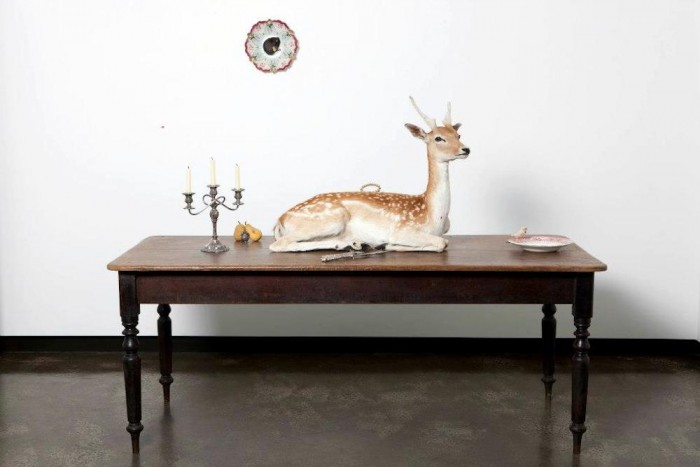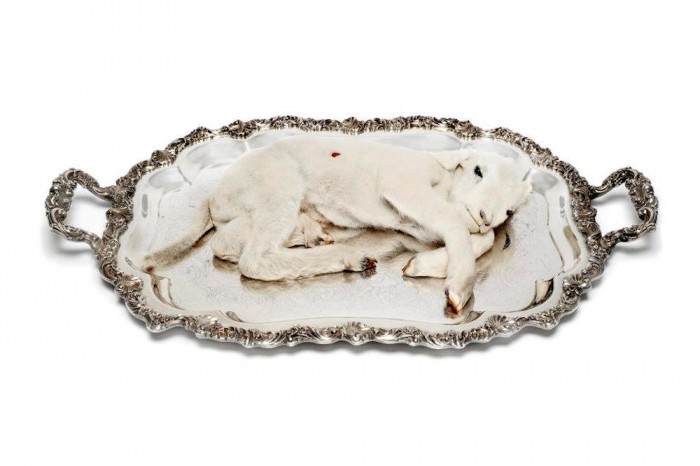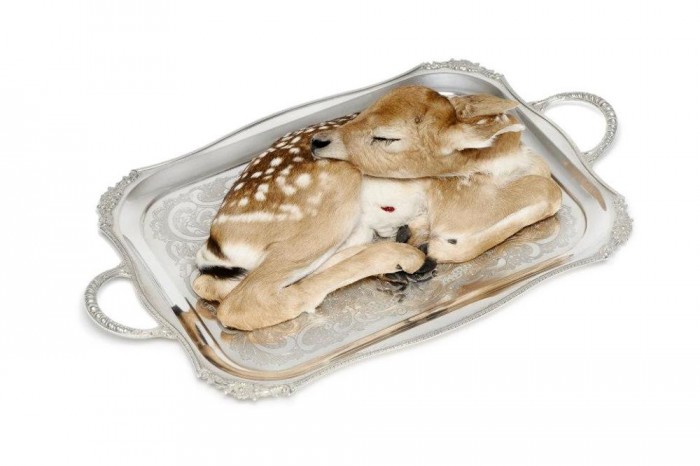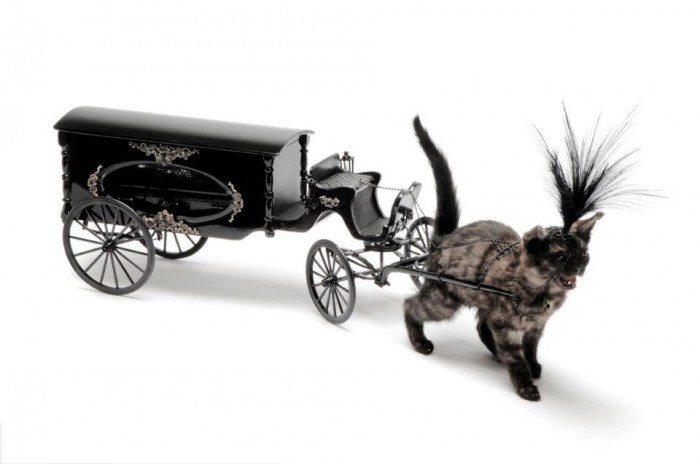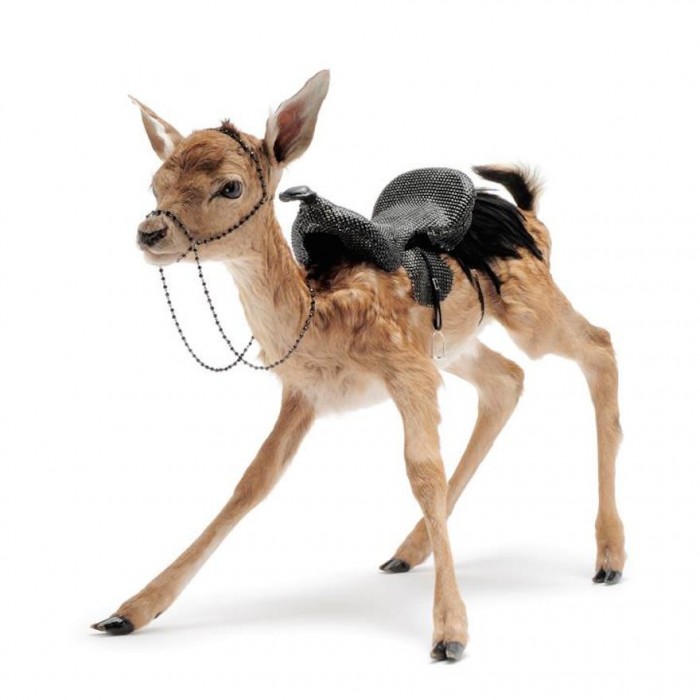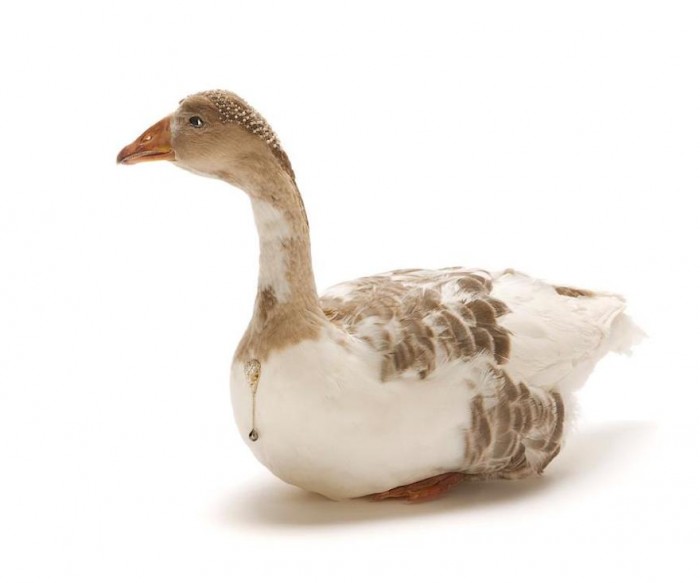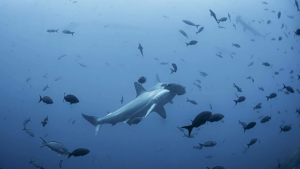Dodie Smith's 1956 novel The Hundred and One Dalmatians introduced the world to Cruella de Vil. The infamous character chooses to skin puppies for their fur, attaching a macabre element to fur designs and taxidermy for years to come. Now, a different deVille, Julia deVille, uses taxidermy to celebrate life and draw attention to the way animals are treated in the modern world.
“My work has a really strong animal rights and ethical foundation so all the animals I work with have died of natural causes,” says deVille.
In contrast to the trophy-hunting culture usually associated with taxidermy, the New Zealander says her works seek to celebrate life and also show the way animals are used and abused in our society.
“I’ll take domesticated animals like cats and dogs and put them in pots and pans to highlight why we think it’s acceptable to do that to one animal but not another.”
DeVille is currently a finalist in the Woollahra Small Sculpture Prize this year for Caesar, a stillborn kitten in a silver and ivory chariot. DeVille has exhibited extensively in Australia as well as in Europe and the USA.

